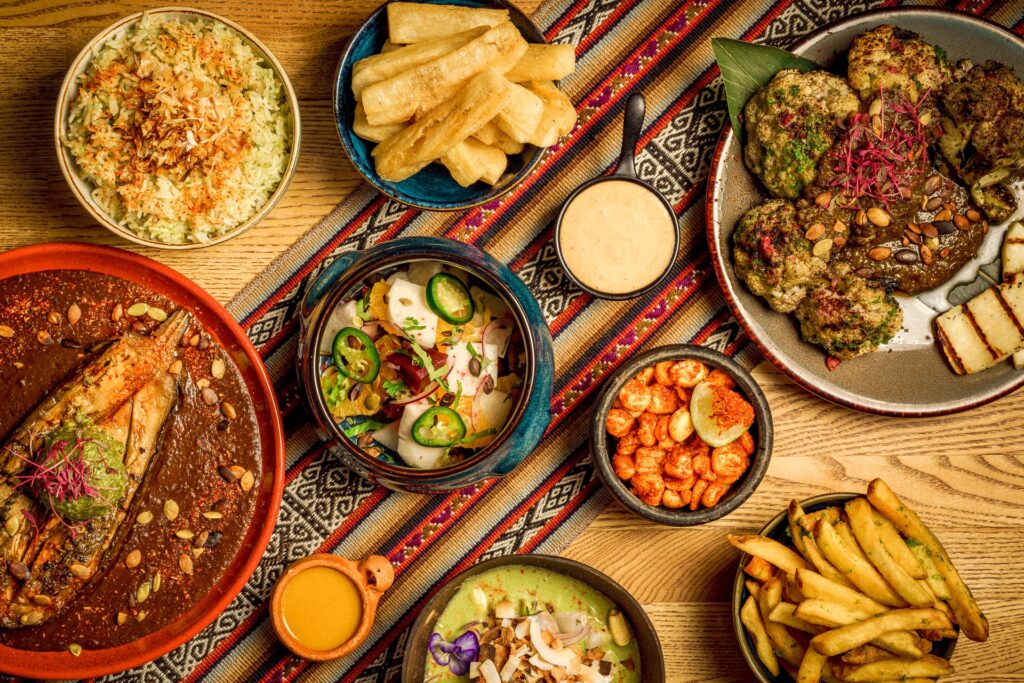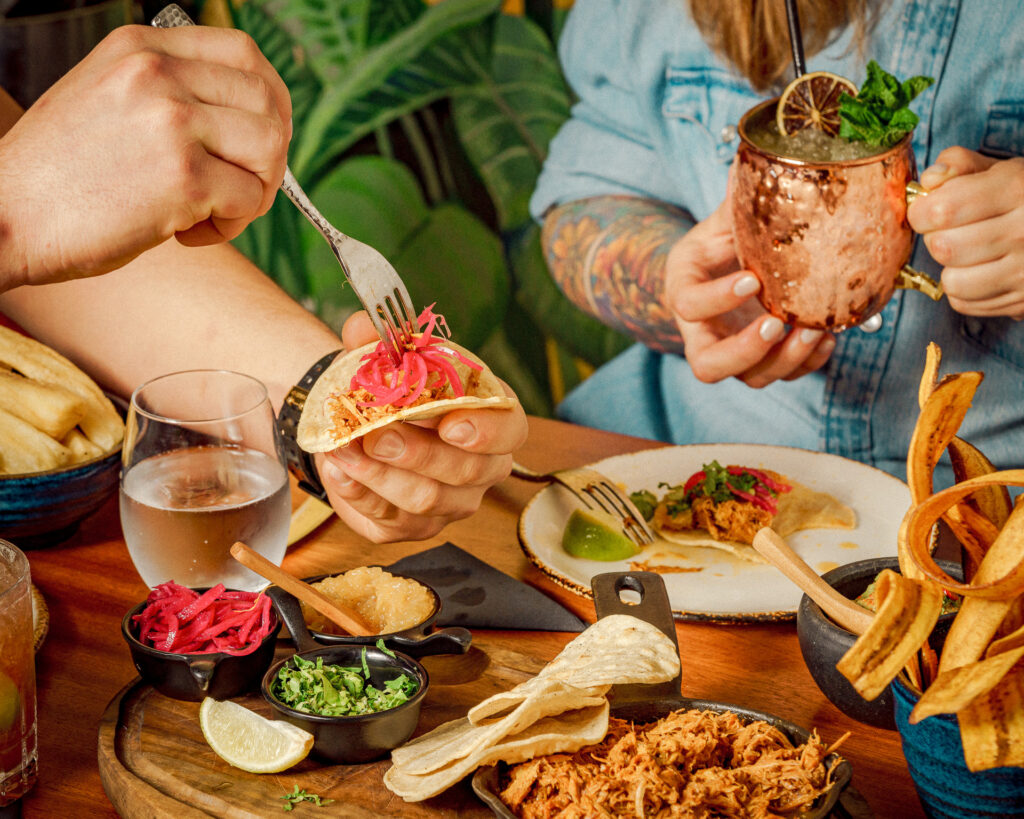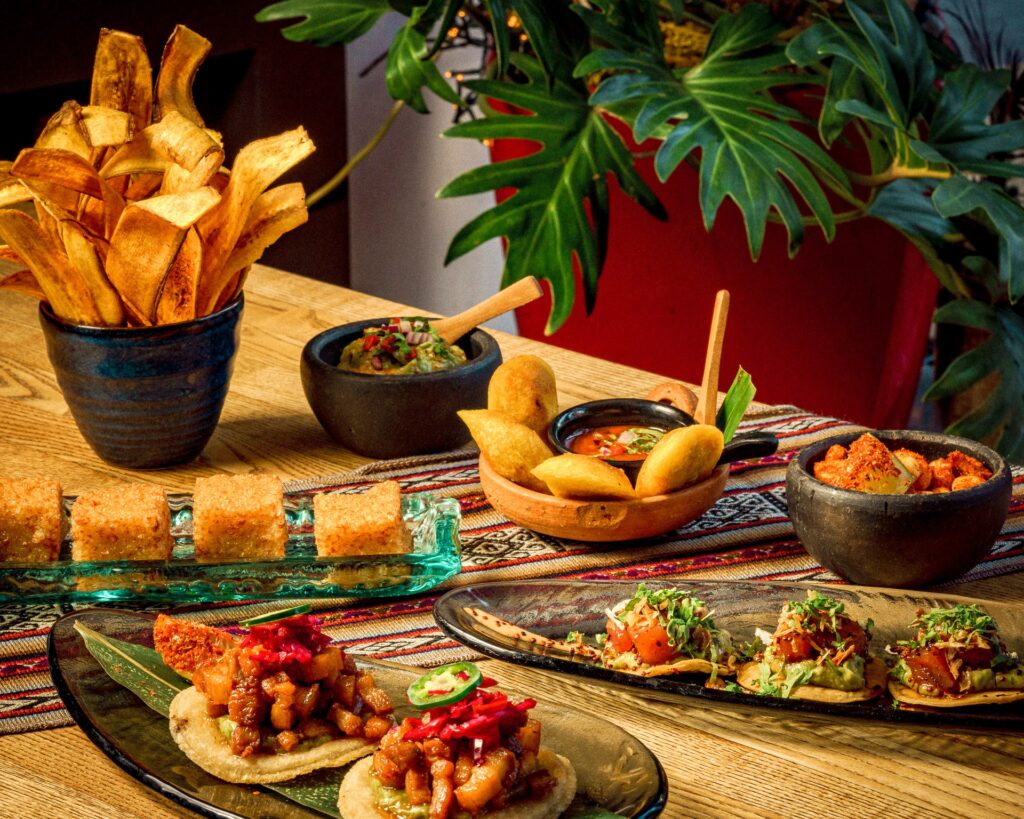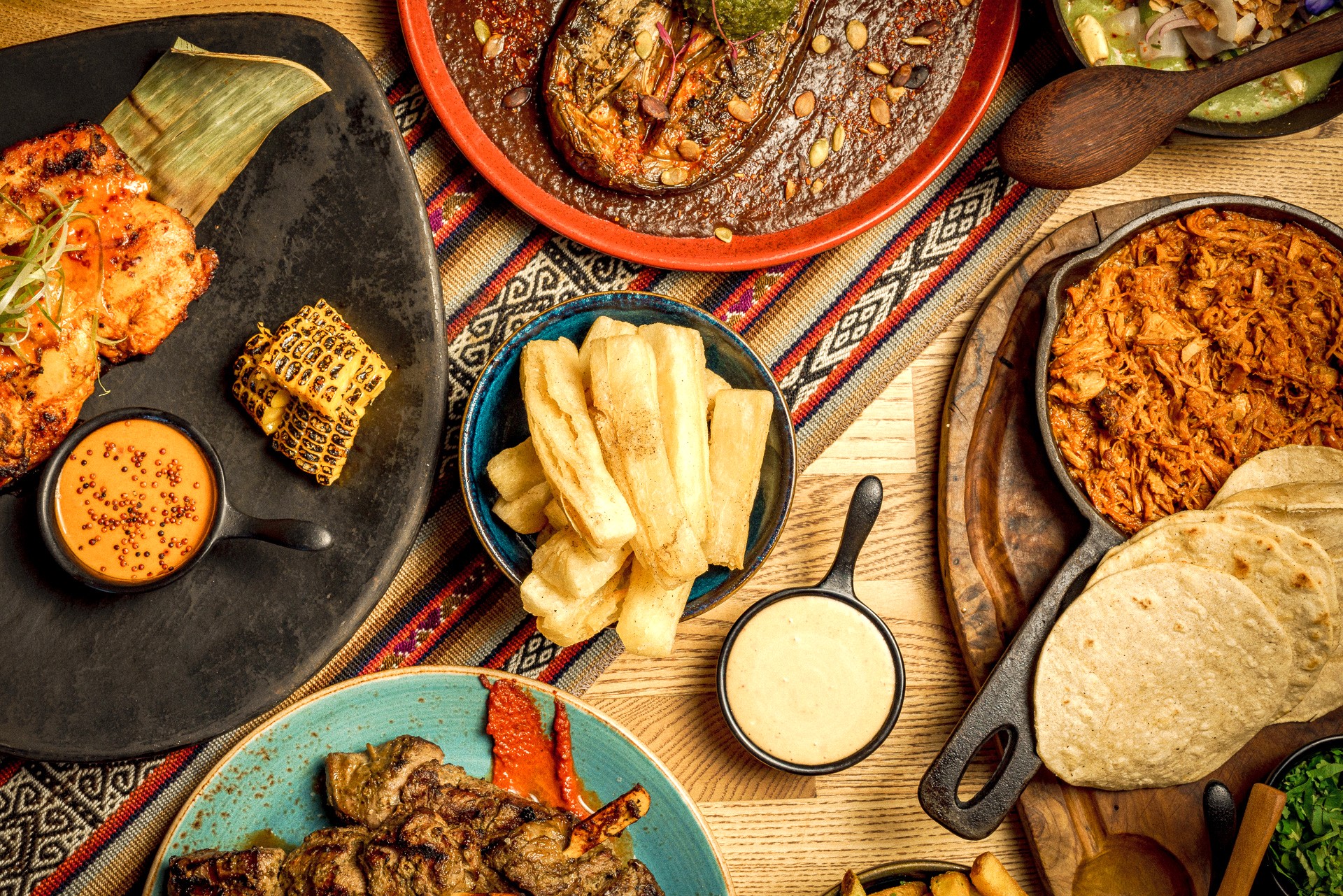Here, at Paladar, we exclusively prepare gluten-free meals to ensure the highest level of safety and quality for our customers. By focusing solely on gluten-free ingredients and recipes, we eliminate the risk of cross-contamination that can occur when gluten-containing foods are prepared alongside gluten-free options. Our dedicated kitchen staff is trained to handle only naturally gluten-free ingredients and gluten-free grains, maintaining strict cleanliness in food storage areas and cooking equipment. This commitment allows those with celiac disease, gluten intolerance, or wheat allergies to dine with confidence, knowing that every meal is carefully crafted to meet their dietary needs without compromise.
Introduction to Gluten-Free
A gluten-free diet is essential for managing celiac disease and other gluten-related conditions. It involves removing gluten from your diet to prevent immune system damage to the small intestine.
Gluten is a protein found in certain grains like wheat, barley, rye, and triticale, and can be hidden in many foods, including processed foods and ready meals.
Naturally gluten-free foods, such as fruits, vegetables, meats, and seafood, are a great starting point for a gluten-free diet.
Understanding gluten intolerance and its symptoms, such as stomach pain and digestive issues, is crucial for maintaining a healthy gluten-free diet.
Medical Conditions Requiring a Gluten-Free Diet
Celiac disease is a medical condition that requires a lifelong gluten-free diet to prevent intestinal damage and symptoms like diarrhea and stomach pain. The immune system mistakenly attacks healthy tissues and organs in celiac disease.
Other conditions, such as gluten ataxia and wheat allergy, may also require a gluten-free diet to manage symptoms and prevent complications.
A healthcare professional can help determine the best course of treatment for gluten-related conditions and provide guidance on following a gluten-free diet.
Gluten-free diets may also be beneficial for individuals with non-celiac gluten sensitivity, who may experience symptoms like bloating and abdominal pain after eating gluten.
Understanding Gluten
Gluten is a protein found in certain grains, including wheat, barley, and rye, and is often used as a binding agent in foods.
Gluten can be hidden in many foods, including processed meats, soy sauce, and malt flavoring, making it essential to read labels carefully.
Gluten-free flours, such as rice flour and almond flour, can be used as substitutes in baking and cooking.
Understanding the different types of gluten, including wheat gluten and barley malt, can help individuals make informed choices about their diet. Oats are naturally gluten-free, but may become tainted during production with gluten-containing grains.
Gluten-Containing Foods to Avoid
Foods containing wheat, barley, and rye, such as bread, pasta, and cereals, should be avoided on a gluten-free diet.
Processed foods, such as ready meals and processed meats, may contain gluten and should be checked carefully.
Foods labeled as “gluten-free” must contain less than 20 parts per million of gluten, making them safe for individuals with gluten intolerance. Gluten-containing grains must be clearly labeled on food products according to allergen labeling requirements.
Cross-contamination with gluten can occur in food storage areas, cooking equipment, and utensils, making it essential to take steps to prevent it.
Eating Gluten-Free
Eating gluten-free involves choosing naturally gluten-free foods, such as fruits, vegetables, and meats, and avoiding gluten-containing foods.
Gluten-free recipes and meal plans can help individuals stick to their diet and ensure they are getting all the nutrients they need.
Gluten-free beers and other beverages can be enjoyed in moderation, but it’s essential to check the ingredients and gluten content. Alcoholic beverages made from gluten-free ingredients, such as grapes or juniper berries, can be labeled gluten-free.
Dining out on a gluten-free diet requires careful planning and communication with restaurant staff to ensure that meals are prepared safely.

The Risks of Eating Gluten
Eating gluten can cause a range of symptoms, including stomach pain, diarrhea, and fatigue, in individuals with gluten intolerance.
Long-term consumption of gluten can lead to complications, such as malnutrition and increased risk of other diseases, in individuals with celiac disease.
Gluten can also cause damage to the small intestine and immune system, making it essential to remove it from the diet.
Other symptoms of gluten intolerance, such as nerve damage, skin rashes, ongoing extreme tiredness, headaches, depression, and bone or joint pain, can also occur if gluten is not removed from the diet.
Benefits of a Gluten-Free Diet
A gluten-free diet can help manage symptoms of celiac disease and other gluten-related conditions, improving overall health and well-being.
Removing gluten from the diet can also lead to weight loss and improved energy levels in some individuals.
A gluten-free diet can also help reduce the risk of complications, such as osteoporosis and anemia, in individuals with celiac disease. Symptoms of celiac disease should improve considerably within weeks of starting a gluten-free diet.
Many individuals report improved digestion and reduced symptoms of irritable bowel syndrome on a gluten-free diet.
How to Eat Gluten-Free
Reading labels carefully and checking for gluten-containing ingredients is essential for eating gluten-free. Medication labels may list wheat gluten as a binding agent.
Choosing naturally gluten-free foods, such as fruits and vegetables, can make it easier to stick to a gluten-free diet.
Gluten-free flours and flour mixes can be used to make gluten-free bread and baked goods.
Cooking equipment and utensils should be cleaned and sanitized regularly to prevent cross-contamination with gluten.
Managing Gluten Intolerance
Managing gluten intolerance requires a lifelong commitment to a gluten-free diet and lifestyle.
Working with a healthcare professional can help individuals develop a personalized plan for managing their gluten intolerance.
Joining a support group or online community can provide connection and resources for individuals with gluten intolerance.
Keeping a food diary and tracking symptoms can help individuals identify patterns and triggers of gluten intolerance. It is unclear if non-celiac gluten sensitivity is a lifelong condition.

Living with Gluten Intolerance
Living with gluten intolerance requires careful planning and attention to detail, but it is possible to lead a healthy and active life.
Traveling and dining out on a gluten-free diet require extra planning and research, but many restaurants and hotels now offer gluten-free options.
Gluten-free products and ingredients are widely available in health food stores and online, making it easier to maintain a gluten-free diet. Many gluten-free versions of common foods, such as pasta, pizza bases, and bread, are available in supermarkets.
Connecting with others who have gluten intolerance can provide support and community.
Nutrition and Gluten-Free
A gluten-free diet can be nutritionally balanced and complete, but it requires careful planning and attention to nutrient intake.
Gluten-free foods can be fortified with nutrients, such as iron and B vitamins, to help meet nutritional needs.
Collaborating with a registered dietitian or healthcare professional can assist individuals in creating a tailored nutrition plan.
Many naturally gluten-free foods, such as fruits and vegetables, are rich in nutrients and can provide a range of health benefits.
Gluten-Free Diet Costs
A gluten-free diet can be more expensive than a traditional diet, but there are many affordable options and resources available.
Buying in bulk and planning meals in advance can help reduce costs.
Many health food stores and online retailers offer discounts and promotions on gluten-free products.
Cooking at home and preparing meals from scratch can also help reduce costs and improve nutrition.
Avoiding Cross-Contamination
Avoiding cross-contamination with gluten is essential for individuals with gluten intolerance, and requires careful attention to food preparation and storage.
Cleaning and sanitizing cooking equipment and utensils regularly can help prevent cross-contamination.
Using separate cooking surfaces and utensils for gluten-free foods can also help prevent cross-contamination.
Labeling and storing gluten-free foods separately can help prevent mix-ups and cross-contamination.
Gluten-Free Eating at Home
Eating gluten-free at home requires careful planning and attention to detail, but it can be easy and convenient.
Cooking at home allows individuals to control the ingredients and preparation of their meals, reducing the risk of cross-contamination.
Many gluten-free recipes and meal plans are available online and in cookbooks, making it easy to find inspiration and ideas.
Keeping a well-stocked pantry with gluten-free staples can make it easier to whip up a quick and easy meal.
Gluten-Free Eating in Restaurants
Eating gluten-free in restaurants requires careful planning and communication with restaurant staff.
Many restaurants now offer gluten-free options and menus, making it easier to dine out safely.
Asking questions and informing restaurant staff of gluten intolerance can help ensure that meals are prepared safely.
Checking online reviews and menus in advance can help individuals make informed choices about where to dine.

Gluten-Free Resources
Many resources are available to support individuals with gluten intolerance, including online communities and support groups.
Registered dietitians and healthcare professionals can provide personalized guidance and support.
Gluten-free cookbooks and recipes can provide inspiration and ideas for meal planning.
Online retailers and health food stores can provide access to gluten-free products and ingredients.
Conclusion
A gluten-free diet can be a healthy and balanced choice for individuals with gluten intolerance, but it requires careful planning and attention to detail.
With the right resources and support, individuals can thrive on a gluten-free diet and enjoy a wide range of delicious and nutritious foods.
Remember to always read labels carefully, choose naturally gluten-free foods, and take steps to prevent cross-contamination.
By following these tips and guidelines, individuals can maintain a healthy and balanced gluten-free diet and lifestyle.

